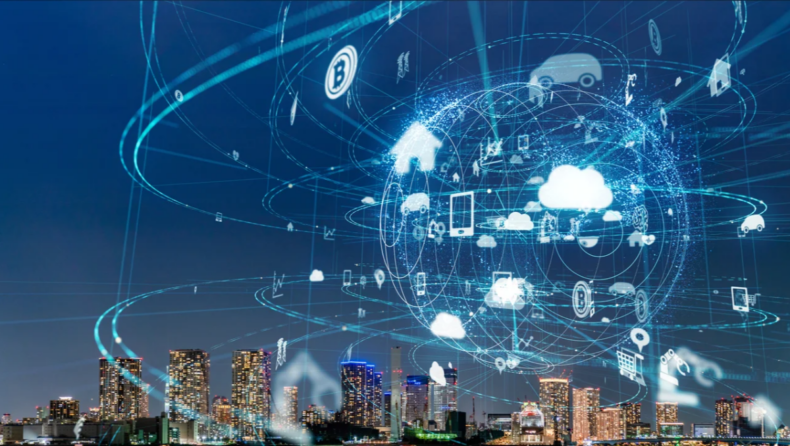Have you ever fantasized about pressing a button on your phone and getting things done then and there? Here comes the Internet of Things (IoT)!
Internet of Things (IoT), What is it?

Imagine living in a world where by clicking a switch from your bed you’re able to turn on the geyser or by switching on the light bulb using a mobile app you can turn off the lights in your office. No matter how illusionary it might sound, the Internet of Things is on its way.
The Internet of Things refers to a network of physical objects—”things”—embedded with sensors, software, and other technologies for connecting and exchanging data with other devices and systems via the internet.
The term “Internet of Things” refers to devices that are not normally expected to have an internet connection but can communicate with the network without human intervention.
For this reason, a PC isn’t usually considered an IoT device, nor is a smartphone, despite the latter’s abundance of sensors. A smartwatch could be considered an IoT device.
These gadgets range from common household items to sophisticated industrial tools. Experts predict that by 2025, there will be more than 7 billion connected IoT devices.
IoT gives businesses and individuals greater visibility and control over objects and environments that are currently out of reach of the internet.
As a result, IoT enables them to be more connected to their surroundings and to perform more meaningful and higher-level work.
Any physical object that is connected to the internet can be transitioned into an IoT device.
History of the Internet of Things (Iot)
Adding sensors and intelligence to basic objects was discussed throughout the 1980s and 1990s, but aside from a few early projects, such as an internet-connected vending machine, progress was slow simply because the technology wasn’t ready.
Chips were too large and bulky, and objects couldn’t communicate effectively.
Before it became cost-effective to connect billions of devices, processors that were cheap and power-efficient enough to be all but disposable were required.
RFID tags—low-power chips that can communicate wirelessly—along with the increasing availability of broadband internet and cellular and wireless networking—solved some of this problem.

The modification of IPv6, which should provide enough IP addresses for every device the world will ever need, was also a necessary step for the Internet of Things to scale.
In 1999, Kevin Ashton coined the term “Internet of Things.” It took another decade for technology to catch up with the idea of the Internet of Things.
“The Internet of Things (IoT) integrates the interconnectedness of human culture- our “things” with the interconnectedness of our digital information system- “the internet”. That’s the IoT, Ashton told ZDNet.
One of the first IoT applications was to attach RFID tags to expensive pieces of equipment to help track their location. However, the cost of adding sensors and an internet connection to objects has continued to fall, and experts predict that this basic functionality will one day cost as little as 10 cents, allowing nearly everything to be connected to the internet.
If you want to succeed you must fail first, says the man who dreamt up the Internet of Things.
Benefits of Internet of Things
There are an ample number of benefits that the Internet of Things provides, from consumers to industries. Manufacturing, automotive, transportation and logistics, retail, government, and healthcare sectors are all benefiting.
But everything comes with its disadvantages

Security and Privacy Issues
Therein lies one of the biggest issues, which is security and privacy. In many cases, these sensors are collecting data that is extremely sensitive to a person, like, whatever a person says or does at his home.
Keeping it secure is vital to consumer trust, but so far, the IoT’s security track has been extremely poor. Too many IoT devices give little thought to the basics of security, like encrypting data in transit and at rest.
Due to flaws, smart home devices such as refrigerators, ovens, and dishwashers are vulnerable to hackers.
Researchers discovered 100,000 hackable webcams, while some internet-connected smartwatches for children were discovered to contain security flaws that allow hackers to track the wearer’s location, eavesdrop on conversations, or even communicate with the user.
Governments are growing worried about the risks. The UK government has published its own guidelines around the security of consumer IoT devices.
Because the Internet of Things (IoT) connects the digital and physical worlds, hacking into devices can have disastrous real-world consequences.
Read more: Internet dating Security: Are You Experiencing A False Sense of Security?













